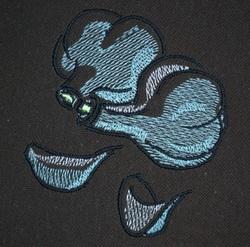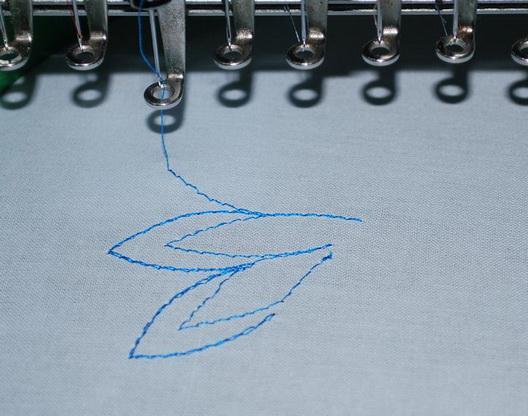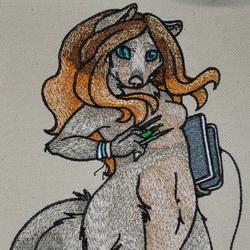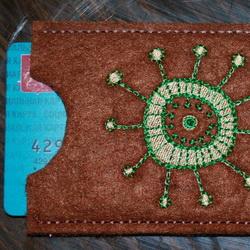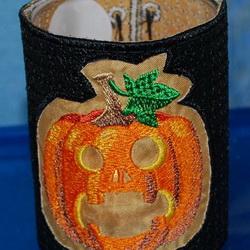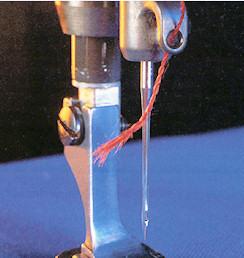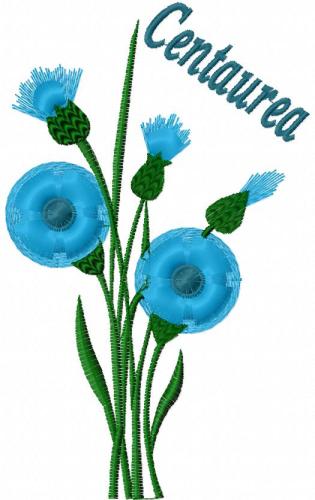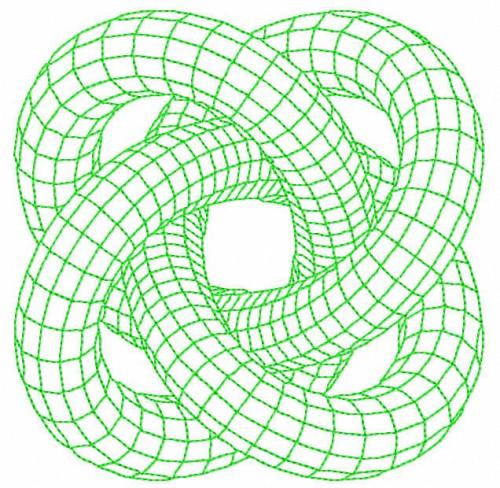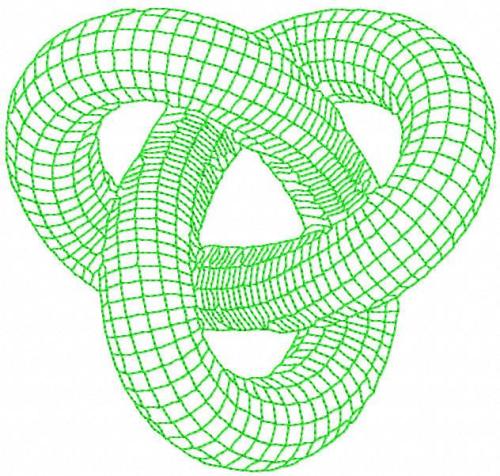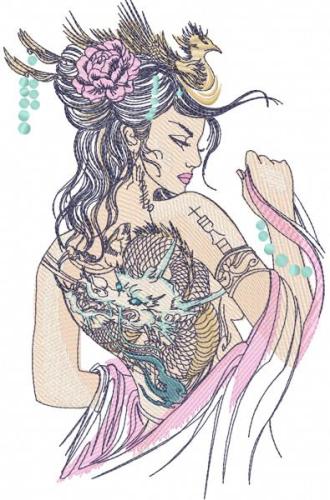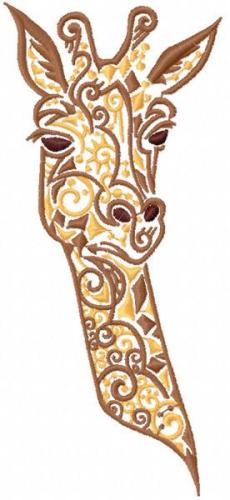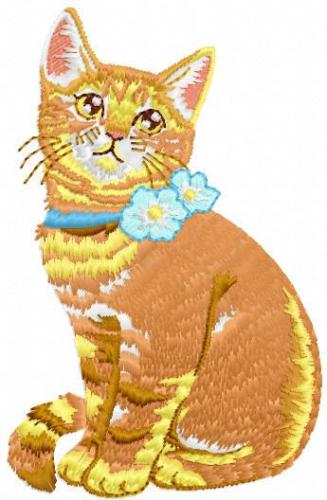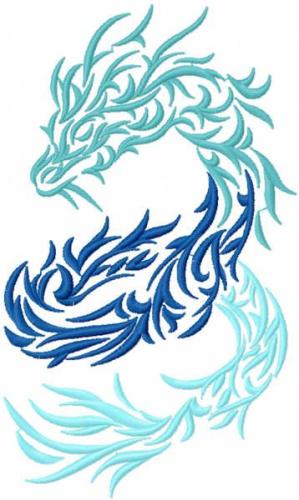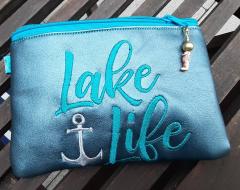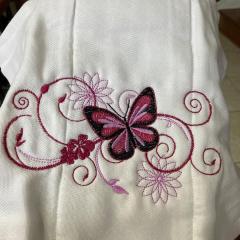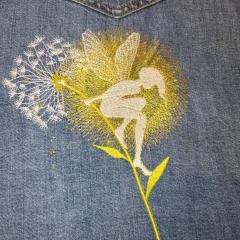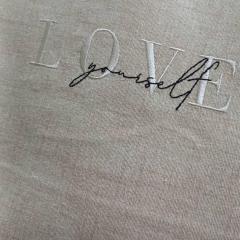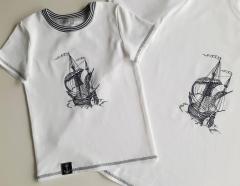A questionable method of machine embroidery without hooping
By
Irina, in Machine embroidery materials and technology, , 2 comments, 7,419 views
The question of machine embroidery without hooping was raised on the embroidery forums more than once. This method is presented as the one that reduces the time of production by replacing the laborious hooping procedure with sticking an item on the hooped paper.
It includes the following steps:
a piece of a heavyweight paper or a water soluble stabilizer is hooped or framed a window of a slightly bigger than the size of the future design is cut in it a doubled-sided adhesive tape is stuck perimeter-wise (we used the builders adhesive tape, the wide one. It is of a highest quality and therefore costly) the item is stuck to the adhesive tape the hoop or the frame is lifted and a stabilizer is put under them the item is embroidered as usual After embroidery the item is unstuck and the other one goes in its place. The process repeats. When the adhesive tape gets littered with pile from the fabric, another layer is stuck on top of it, or the fabric won't hold in place. In general, this method is alike to the one where sticky paper (Filmoplast) is used. Only here the sticky underlay is reusable.
I first saw this method on Yaroslavl embroidery factory. Practically everyone there embroiders using this method. Of course, I was inspired by the prospects it gave, because they advertised it like a new Japanese technology.
But when I tried it myself, I found out that there were many nuances, which, of course, nobody was too eager to tell me.
The first nuance was wickedly commonplace — 2,5 years ago it was extremely difficult to buy a thin double-sided adhesive tape in Moscow. A adhesive tape of a similar kind, which I bought from Chinese not long ago, is shown on the photo:
The only place where you could find a sufficient quantity of it (for using this method you consume quite a lot) at a rather immoderate price was the factory I mentioned earlier. Strange coincidence, isn't it? The price remains to be rather high — about 35 RUR for a roll of tape. Only the builder's adhesive tape was in free circulation on the market; it sometimes didn't hold the fabric in place, and besides, it wore out quickly. Not any kind of builder's adhesive tape is good for fabrics, so you should test it before use. I remember several occasions when an adhesive tape stuck to the paper rather badly, but at the same time stuck to the fabric like glue, so it would not come off.
The second nuance — it is not suitable for all kinds of fabrics. Slippery fabrics, and also piled ones, tend to unstick in the middle of embroidery process, damaging the result. That's why you have to stop your machine all the time and press the fabric down on tape. And as if that is not enough, you need to renew the sticky layer much more often.
The third nuance – not all of the designs can be embroidered in that way. You may forget about big designs with large amount of stitches in them once and for all.
The fourth nuance is that the embroidery is mercilessly warped. And this is despite all the gimmicks with the stabilizer.
The firth nuance — not all frames can be lifted so that the stabilizer could be put under them. ZSK frame is thick and heavy. You won't lift it up so easily:
On the photo below a similar border frame — a thin and bendy Tajima:
The sixth nuance is that the stabilizer on a ZSK split table puckered all the time and got into the rolling elements of the central guide frame, which caused the frame to jerk and resulted in shifting of the design.
In other words, there are hidden pitfalls... everything we are told and advised of — all of that we should by all means try for ourselves.
But today I decided to quicken the production process, using the method of sticking. We have embroidered a batch of napkins with a small design of 3000 stitches with its help. A quick method, without a doubt. But an unreliable one. And without a stabilizer. But the fabric was a first-rate one – the embroidery almost didn't warp.
P.S. Do I use this method nowadays? Yes, I do. But only for very small designs containing a small amount of stitches, which are not easy to hoop (for example, you need to embroider something at the distance of 1 cm from the corner of a towel). But I've noticed that once the design is bigger that 10x10 cm or the number of steps reaches 5000, you have to stand in front of the machine and watch the fabric: whether it does not slide off such an insecure affixment.




